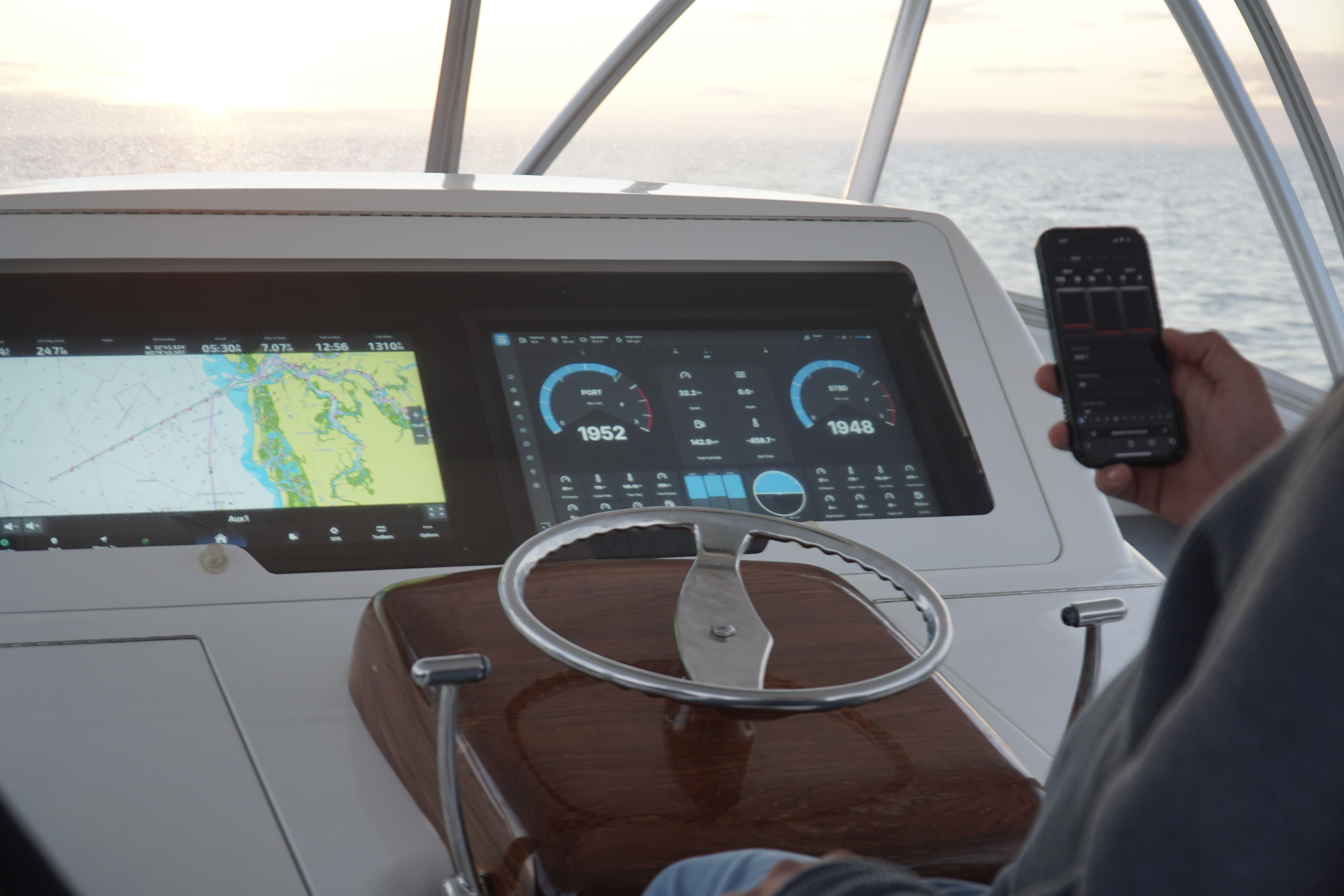Real-World Proving Grounds: How Command Performed on a 1200NM Offshore Run

In seven days, our test vessel covered 1,200 nautical miles, a demanding, nonstop run down the East Coast that pushed every onboard system to its limits. Command, our all-in-one marine automation platform, connected and interacted with every major system on board throughout the trip. From digital switching to propulsion data, and from fuel management to environmental monitoring, every critical function was tracked and controlled directly from the helm and the smartphones on board. This real-time vessel monitoring gave the crew a complete picture of system behavior, engine performance, and onboard electronics throughout the offshore run.
“Being able to see and operate the entire vessel from my phone was a game changer. During the more intense parts of the trip, with water spraying on the helm, I didn’t even need to leave my seat or hover over the helm. Everything I needed was right there in my hand. And because everyone on board had access to the same critical vessel data from their own devices, we were all operating with the same real-time awareness. It made managing the long offshore stretches significantly easier.” - Captain Joshua Martin
This run wasn’t just about covering distance. Our test vessel, a 2013, 66-foot Viking, needed to make its biannual voyage from New London, CT, to Palm Beach, FL. After months of sea trials, it was finally time to put the Command system to the test under real offshore conditions. We used this opportunity to evaluate how the platform performs as a complete vessel automation system, something we simply can’t replicate by doing laps in Long Island Sound. A trip like this exposes weaknesses that never appear in controlled environments, making it the most honest way to refine and advance our marine automation software.
For this trip, the vessel was outfitted with a full suite of integrations. Every engine parameter, fuel metric, tank level, generator status, pump cycle, and electrical load was streamed directly into Command’s data layer in real time. Radar and charting were managed by our in-house map software, along with our Proteus Core radar overlay powered by Tocaro Blue. Proteus Core allowed us to automatically detect, classify, and track objects using their machine-learning pipeline, displayed as a live overlay on the charting system. This level of marine electronics integration is core to Command’s approach to modern yacht automation systems.
“During one of our night runs, I couldn’t see the channel marker as indicated on the MFD, but thanks to the Proteus Core software, we were able to pinpoint the exact location of the channel. It was truly a powerful tool.” - Captain John Digertt
A run this length exposed the maritime automation platform to nearly every operational condition a vessel can encounter. Since the entire system lives on a local network, every alarm, data stream, and parameter was monitored locally without relying on an internet connection. This ensured uninterrupted visibility during offshore legs where connectivity is limited. It also validated Command’s architecture as a reliable solution for vessel automation systems that must function in isolated environments.
This 1,200-mile voyage gave us the most complete and honest look at how Command performs as a full marine automation system. The platform handled continuous offshore operation, shifting conditions, and full-system integration without interruption, delivering the kind of reliability, situational awareness, and vessel monitoring capability that cannot be achieved through short trials. With every long-range voyage, we learn more, refine more, and continue pushing toward a smarter, more connected experience for operators seeking modern automation for ships and sportfishing vessels.
If you will be in South Florida this winter, we will be running private demonstrations aboard the test vessel. Reach out to schedule a time to see the Command platform in action.
Subscribe to our newsletter
Lorem ipsum dolor sit amet, consectetur adipiscing elit. Suspendisse varius enim in eros elementum tristique.

